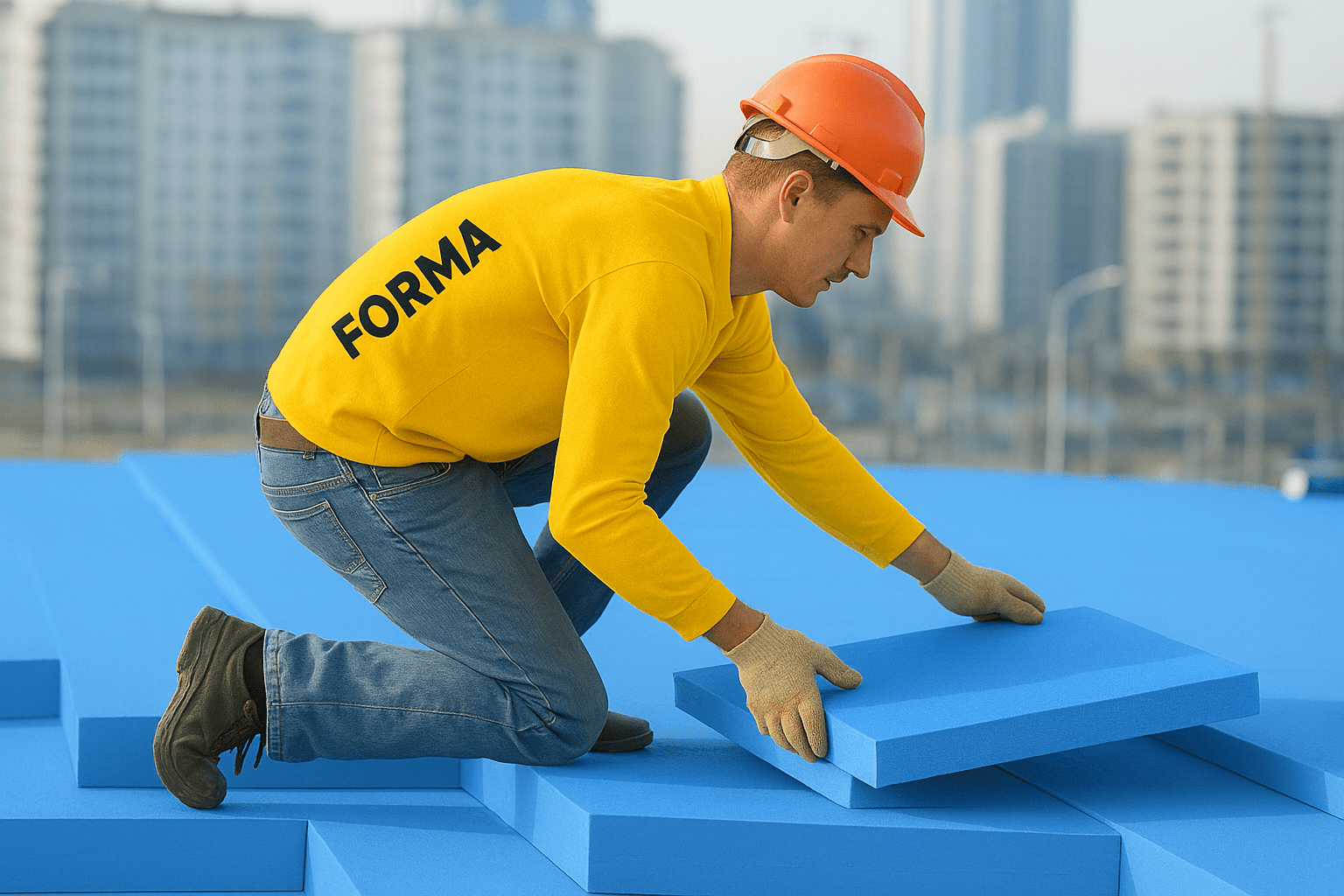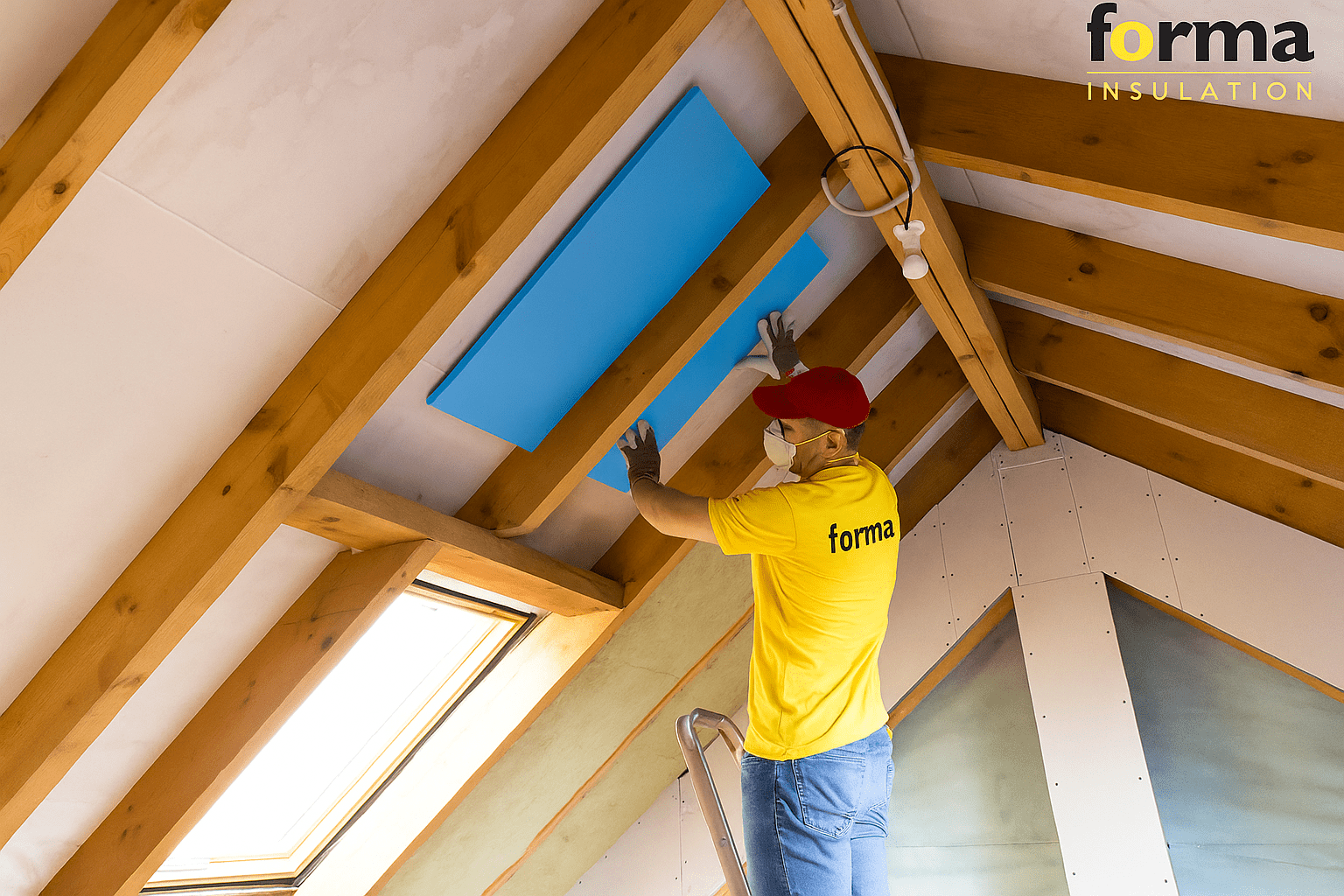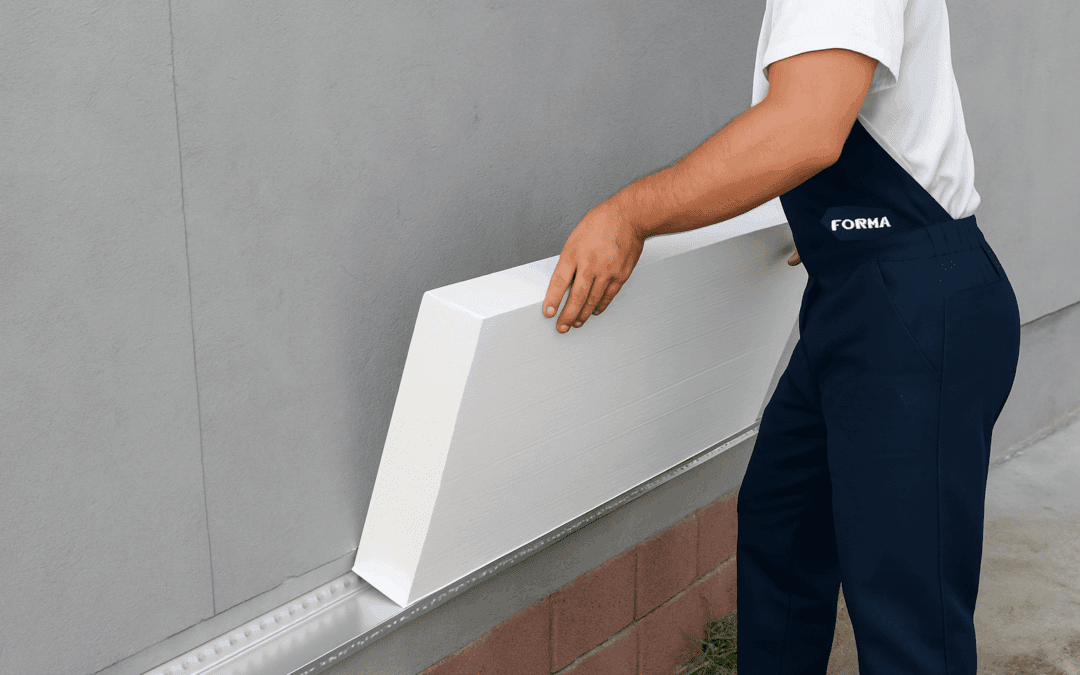When designing or renovating buildings, one of the most crucial aspects to consider is thermal insulation material. The right insulation helps maintain indoor temperature, reduces energy consumption, and increases the overall comfort of a space. Whether you’re insulating a home, office, or industrial facility, choosing the correct thermal insulation material is essential for long-term performance and sustainability.
At Forma, we specialize in high-performance insulation solutions tailored for various building types and climate zones. In this article, we explore the significance of thermal insulation, the types of materials available, and how to choose the best option for your needs.
Thermal Insulation: Why It Matters
Thermal insulation is the process of reducing heat transfer between the inside and outside of a building. It helps keep warm air inside during the winter and blocks excess heat in the summer. This results in lower energy bills and a more comfortable environment year-round.
Effective thermal insulation material not only reduces heating and cooling costs but also improves indoor air quality and decreases the building’s carbon footprint. This makes it an essential part of sustainable building design and energy efficiency planning.
Insulation Materials: A Wide Range of Options
There are several types of insulation materials available today, each with unique properties and applications. Choosing the right one depends on your building type, climate, budget, and performance requirements.
Some of the most commonly used thermal insulation materials include:
- Polyurethane foam
- Polystyrene boards (EPS and XPS)
- Fiberglass
- Cellulose
- Reflective or radiant barriers
High-performance thermal insulation materials such as EPS, XPS, and Polyurethane foam meet many of these criteria and are often considered among the most effective options for multi-purpose use. FORMA ensures that all its insulation solutions are rigorously tested to maintain high standards across all essential properties of thermal insulating materials.

Class Insulation: Matching Material to Building Codes
In many countries, building regulations classify thermal insulation materials according to their fire resistance, compressive strength, and environmental impact. This classification helps architects and engineers determine the right product for each application.
For example, Class A materials often include high-performance insulation solutions such as EPS, XPS, and Polyurethane foam, making them ideal for buildings where fire safety is a major concern. At FORMA, our products meet or exceed international insulation standards, providing peace of mind and compliance with modern building codes.
Insulation Energy Efficiency: Lower Bills, Better Comfort
Investing in high-quality thermal insulation material can significantly enhance a building’s energy efficiency. A well-insulated building requires less heating in the winter and less air conditioning in the summer. This leads to considerable energy savings, reduced strain on HVAC systems, and a more sustainable operation.
When it comes to insulation energy efficiency, the R-value of a material (its resistance to heat flow) is a key metric. The higher the R-value, the better the insulation performs. FORMA offers a wide range of products with excellent R-values to suit both residential and commercial applications.
Wall Insulation: A Critical Application Area
One of the most important areas for applying thermal insulation material is the walls. Wall insulation plays a major role in controlling indoor temperatures and preventing energy loss.
There are different methods of insulating walls, such as:
- Cavity wall insulation
- Solid wall insulation (internal or external)
- Timber frame wall insulation
EPS, XPS, and Polyurethane foam are especially effective for wall insulation, as they provide excellent thermal resistance and additional soundproofing benefits. Whether in new constructions or retrofit projects, FORMA offers the right thermal insulation solutions to ensure optimal performance.
Properties of Thermal Insulating Materials
Not all thermal insulation materials are created equal. The ideal insulation product should offer a combination of the following properties:
- Low thermal conductivity (high R-value)
- Fire resistance
- Water repellency
- Durability and long lifespan
- Sound absorption
- Environmental friendliness
EPS, XPS, and Polyurethane foam meet many of these criteria and are often considered among the best materials for multi-purpose use. FORMA ensures that all its insulation solutions are rigorously tested to maintain high standards across all essential properties of thermal insulating materials.
Read more details about: solutions

Thermal Insulation Materials in Buildings
The use of thermal insulation materials in buildings has become a standard practice in both residential and commercial construction. With growing awareness of climate change and energy conservation, builders are under increasing pressure to adopt efficient and eco-friendly materials.
Key areas where thermal insulation materials are commonly used in buildings include:
- Walls (interior and exterior)
- Roofs and ceilings
- Floors and basements
- HVAC ducts and piping
FORMA’s extensive catalog includes solutions for all these applications, with a strong focus on durability, ease of installation, and performance.
FORMA: Your Partner in High-Quality Insulation
With years of industry experience, FORMA has built a reputation as a trusted provider of reliable and effective thermal insulation materials. Our mission is to help clients build smarter, more efficient, and environmentally conscious structures.
Here’s why professionals choose FORMA:
- Expert guidance on selecting the right insulation product.
- High-performance materials.
- Compliance with international building standards.
- Comprehensive product support and technical documentation.
Whether you’re building a home, a high-rise, or a factory, FORMA offers the knowledge and products to meet your thermal insulation needs.
Conclusion
Choosing the right thermal insulation material is a crucial step in improving building performance, reducing energy costs, and enhancing comfort. From EPS and XPS to advanced Polyurethane foam boards, the options are vast, and each provides unique benefits depending on the project.
With a deep commitment to quality and innovation, FORMA continues to lead the way in providing effective and sustainable thermal insulation materials for buildings of all kinds. Whether you’re working on a residential project or a large-scale commercial development, trust FORMA to deliver insulation solutions that last.
1. How does thermal insulation improve energy efficiency in buildings?
Thermal insulation reduces heat transfer through walls, ceilings, and floors, helping maintain indoor temperatures. This minimizes the need for heating and cooling, thus improving energy efficiency and reducing utility bills.
3. Why choose FORMA for thermal insulation materials?
formainsulation offers a wide range of high-performance thermal insulation materials that are durable, eco-friendly, and tested for maximum effectiveness. The company’s focus on innovation and building efficiency makes it a trusted choice in the construction industry.
Read more:
Thermal Insulation Boards
